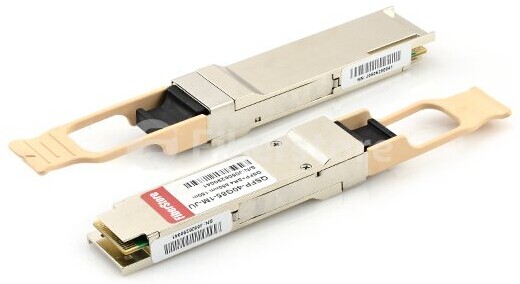In order to meet the demand for increasing the transceiver port density for optical applications and find a cost effective way to increase date rate, multiple communications companies announced the release of a quad small form-factor pluggable (QSFP) optical module specification in its final form in December 4, 2006. The QSFP specification defines a highly integrated four-channel optical transceiver to provide increased port density and total system cost savings when replacing four standard SFP transceiver modules. The 40GBASE QSFP module has become a dominant 40G optical transceiver and offers customers a wide variety of high-density 40 Gigabit Ethernet connectivity options for data center, high-performance computing networks, enterprise core and distribution layers, and service provider transport applications.

There are various kinds of QSFP transceivers for different distance requirements and fiber types. According to various criteria, QSFP transceivers can be divided into different types.
Transport Media
Copper, single mode fiber (SMF) and multimode fiber (MMF) are three kinds of transport media used in 40 Gigabit Ethernet. Different QSFP transceivers may adopt different transport media. According to IEEE Ethernet standard, the followings are commonly used 40 Gigabit Ethernet media system:
QSFP-40G-CR4—40 Gigabit Ethernet over four short-range twinaxial copper cables bundled as a single cable.
QSFP-40G-SR4—40 Gigabit Ethernet over four short-range multimode fiber optical cables.
QSFP-40G-LR4—40 Gigabit Ethernet over four wavelengths carried by a single long-distance single mode fiber optical cable.
Connector Type
Different QSFP transceivers may have different connector interfaces. Through various technologies, many kinds of connectors could be applied into 40 Gigabit Ethernet. And the commonly-used are Duplex LC, MPO and MPO/MTP. MPO and MTP are often used interchangeably. For example, Fiberstore QSFP-40G-SR4 and QSFP-40G-LR4 are transceivers with duplex LC connectors. While the Cisco QSFP-40G-CSR4 is with MPO/MTP connector.
Transmission Distance
According to transmission distance, QSFP transceivers can be divided into short-range QSFP transceiver and long-range QSFP transceiver. QSFP-40GBD-SR is among the various short-range QSFP transceivers. It supports link lengths of 100 meters and 150 meters over laser-optimized OM3 and OM4 multi-mode fibers respectively. As a long-range QSFP transceiver, QSFP-40G-ER4 has a transmission distance of 40 km.
Wavelength
In a QSFP transceiver, the wavelength of each channel can either be of the same or differs from each other. For instance, The wavelengths of Cisco QSFP-40G-SR4 and Cisco QSFP-40G-CSR4 transceivers are 4×850nm. While the four lanes of QSFP-40G-ER4 are 1271nm, 1291nm, 1311nm and 1331nm respectively.
The QSFP specification accommodates Ethernet, Fibre Channel, InfiniBand and SONET/SDH standards with different data rate options. The QSFP transceiver modules can be connected to both copper and optical cables. In the process of transmitting data,the QSFP transceiver converts parallel electrical input signals into parallel optical signals by a driven Vertical Cavity Surface Emitting Laser (VCSEL) array. All data signals are differential and the data rate can be up to 10 Gbps per channel. As the QSFP transceivers are used to interface networking hardware to a fiber optic cable, the choice of them depends on many factors, like the transport media, the connector type, transmission distance, wavelength, etc.
No comments:
Post a Comment